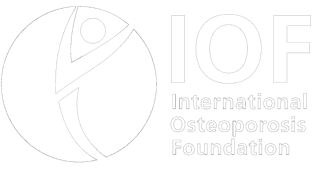Dr. Michael Liewiecki
Goal-directed Treatment of Osteoporosis
Goad-directed treatment of osteoporosis (treat-to-target) is the concept that pharmacological therapy for osteoporosis should seek to achieve an acceptable level of fracture risk in addition to having a response to therapy. A response to therapy is necessary but not necessarily sufficient in achieving an acceptable level of risk. An increase of bone mineral density (BMD), especially at the total hip, is strongly associated with reduction in fracture risk with osteoporosis therapy.
A task force of the American Society for Bone and Mineral Research & Bone Health and Osteoporosis Foundation has reviewed the best available medical evidence and published a position statement (1) on goal-directed treatment. The major principles that were developed were: (a.) Treatment target should be individualized with consideration of the indication for treatment, recency of fracture, number insight of prior fractures, severity of vertebral fractures, BMD, and other risk factors, and (b.) Total hip BMD has emerged as the most useful treatment target because it consistently predicts vertebral and non-vertebral fracture risk reduction with treatment.
The concept of goal directed treatment is consistent with clinical practice guidelines recommending fracture risk stratification as a tool for selecting initial therapy for treatment. With goal-directed therapy, the greater the baseline fracture risk, the more aggressive the initial therapy should be. For patients with baseline total hip T score -2.7 or lumbar spine T-score -3.0, alendronate can be expected to achieve a T-score target greater than -2.5 in more than 50% of women. For patients with lower baseline T-scores, denosumab may be more likely to achieve the goal T-score of greater than -2.5. For patients with lower baseline T-scores yet, than an anabolic agent followed by an antiresorptive agent should be considered. For patients at imminent risk of fracture, such as those with a recent major fracture, initiation of therapy with an anabolic agent should be strongly considered, regardless of baseline T-score.
